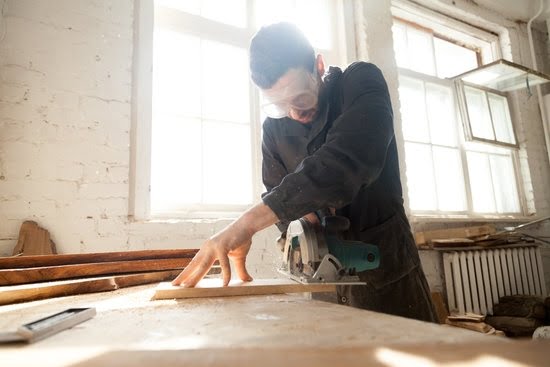Painted woodwork adds beauty and character to any home or space, but it requires proper cleaning to maintain its pristine condition. The best cleaner for painted woodwork is one that effectively removes dirt, grime, stains, and other common issues without damaging the paint or underlying wood. In this article, we will delve into the importance of proper cleaning for painted woodwork and explore the factors to consider when selecting the ideal cleaner.
Proper cleaning is essential for preserving the beauty and longevity of painted woodwork. Over time, dust accumulation, fingerprints, food stains, and even pet dander can build up on surfaces, leading to a dull and unattractive appearance.
Moreover, neglecting regular cleaning can result in permanent damage to the paint or underlying wood due to the abrasive nature of some cleaning products. Therefore, it is crucial to use a cleaner specifically designed for painted woodwork that effectively cleans while being gentle on the surface.
When evaluating the best cleaner for painted woodwork, several factors come into play. Firstly, you need a product that is formulated to effectively remove dirt and stains without causing any discoloration or fading of the paint.
Additionally, considering the ingredients used in the cleaner is important as harsh chemicals may damage delicate finishes or emit harmful fumes. Ease of use, suitability for different types of wood finishes and surfaces, and environmental impact are also important aspects to consider when selecting a cleaner.
In the following sections of this article, we will delve further into understanding common challenges in cleaning painted woodwork, criteria for evaluating cleaners, top contenders reviewed by experts in the field and their ingredients and science behind their effectiveness. We will provide step-by-step instructions on safely and efficiently cleaning painted woodwork as well as expert tips for maintenance and preservation.
We will also explore DIY alternatives using homemade solutions and eco-friendly cleaners before touching upon additional care tips to prolong your painted woodwork’s lifespan. So let’s get started on our journey to find the best cleaner for your painted woodwork.
Understanding the Challenges
Painted woodwork can add a touch of elegance and charm to any home. However, over time, these surfaces can become susceptible to various issues and stains that require thorough cleaning. Understanding the challenges and identifying common issues and stains on painted woodwork is crucial in selecting the best cleaner to effectively address these problems.
One common issue faced with painted woodwork is dust accumulation. Due to the static charge it creates, dust particles tend to cling onto these surfaces, making them appear dull and dirty. Additionally, dirt and grime can also accumulate on painted woodwork, particularly in high-traffic areas such as door frames and baseboards.
Stains are another challenge for painted woodwork. Furniture polish residue, grease splatters from cooking, crayon marks from children, and water spots are some of the most common stains that can mar the appearance of your painted wood surfaces.
To effectively clean these issues, it is essential to choose a cleaner specifically designed for painted woodwork. Here are some factors to consider when evaluating different products:
- Gentle Formulation: Look for a cleaner that is formulated to be gentle on painted surfaces while still being effective at removing dirt and stains.
- Non-Abrasive: Avoid cleaners that contain harsh abrasives or solvents that could potentially damage the paint or finish of your woodwork.
- Stain Removal Power: Consider a cleaner that has proven stain removal capabilities, targeting specific stains commonly found on painted woodwork.
- Safe for Indoor Use: Ensure the cleaner is safe to use indoors without releasing harmful chemicals or fumes that could pose health risks.
By considering these factors when evaluating different cleaners, you can make an informed choice based on your specific needs and requirements for cleaning your painted woodwork effectively and safely.
Criteria for Evaluating the Best Cleaner
When it comes to selecting the best cleaner for painted woodwork, there are several important factors to consider. Understanding these criteria can help you make an informed decision and ensure that you choose the ideal product for your needs.
Effectiveness and Efficiency
One of the most crucial factors to consider when evaluating woodwork cleaners is their effectiveness and efficiency in removing stains, dirt, and grime. The cleaner should be able to penetrate the layers of paint without causing damage or discoloration. Look for a cleaner that is specifically formulated for painted surfaces and has a proven track record of providing excellent results.
Gentle Formulation
Another important criterion to consider is the formulation of the cleaner. Painted woodwork can be sensitive, so it’s essential to choose a product that is gentle and non-abrasive. Avoid harsh chemicals such as bleach or ammonia as they can strip away the paint or cause fading. Instead, opt for cleaners that are pH-neutral or specifically designed for delicate surfaces.
Safety
Safety should also be a top priority when selecting a cleaner for painted woodwork. Some products may contain toxic ingredients that can be harmful to your health or the environment. Look for cleaners that are labeled as non-toxic, eco-friendly, or biodegradable. It’s also essential to follow the instructions provided by the manufacturer carefully to ensure safe usage.
Compatibility with Painted Surfaces
Consider whether the cleaner is suitable for all types of painted surfaces commonly found on woodwork, such as latex, oil-based paint, or enamel. Some cleaners may work well on one type of paint but could potentially damage another type. Ensure that the cleaner you choose is compatible with your specific type of painted woodwork to achieve optimal results.
By considering these criteria when evaluating different woodwork cleaners, you can narrow down your options and select the ideal product for cleaning and maintaining the beauty of your painted woodwork. It’s important to remember that each individual’s needs may vary, so it’s essential to choose a cleaner that aligns with your specific requirements and preferences.
Top Contenders Reviewed
When it comes to effectively cleaning painted woodwork, it is essential to choose the right cleaner for the job. In this section, we will analyze the top contenders when it comes to cleaners for painted woodwork. By understanding their unique features and benefits, you can make an informed choice and ensure that your painted woodwork stays clean and beautiful.
Cleaner A: All-Purpose Wood Cleaner
One of the top contenders for cleaning painted woodwork is an all-purpose wood cleaner. These cleaners are specially formulated to remove dirt, grime, and stains from a variety of surfaces, including painted wood. They are typically safe to use on all types of finishes without causing any damage.
When evaluating an all-purpose wood cleaner as a potential option for cleaning painted woodwork, consider its effectiveness in removing tough stains and its compatibility with various types of paint finishes. Look for a product that is gentle yet powerful enough to tackle grease marks, fingerprints, and other common stains found on painted surfaces.
Cleaner B: Mild Soap Solution
Another contender worth considering is a mild soap solution. This simple solution can be created by mixing a few drops of mild dish soap or castile soap with water. Mild soap solutions are particularly effective at removing general dust and dirt buildup on painted woodwork without causing any damage or discoloration.
When opting for a mild soap solution as a cleaner for your painted woodwork, it is essential to ensure that the soap used does not contain any harsh chemicals or additives that could potentially harm the paint finish. Additionally, avoid using excessive amounts of water to prevent moisture penetration into the wood.
Cleaner C: Vinegar and Water Mixture
For those seeking a more natural cleaning option, a vinegar and water mixture can be highly effective in cleaning painted woodwork. By combining equal parts white vinegar and water in a spray bottle, you can create a gentle cleaning solution that effectively removes dirt and grime without leaving behind any residue.
Before using a vinegar and water mixture on painted woodwork, it is important to conduct a spot test in an inconspicuous area to ensure that it does not cause any discoloration or damage. It is worth noting that while vinegar does have natural antifungal properties, this cleaning solution may not be as effective at removing stubborn stains as other options.
By analyzing the features and benefits of these top contenders for cleaners for painted woodwork, you can choose the best option based on your specific needs and preferences. Whether you opt for an all-purpose wood cleaner, mild soap solution, or vinegar and water mixture, you can trust that these cleaners will help maintain the beauty and longevity of your painted woodwork.
Deep Dive into the Magic Formula
Woodwork cleaners are specially formulated to effectively remove dirt, grime, and stains from painted surfaces without damaging or dulling the finish. To understand why these cleaners are so effective, it is important to take a deep dive into the magic formula and uncover the ingredients and science behind them.
One key ingredient in many woodwork cleaners is a surfactant. Surfactants are compounds that reduce the surface tension between liquids, making it easier for water to spread and penetrate into dirt and stains. This allows the cleaner to break up and lift away dirt particles from the surface of the woodwork.
Another important component in woodwork cleaners is a solvent. Solvents help dissolve and remove greasy or sticky substances that may be present on the painted woodwork. Common solvents used in woodwork cleaners include alcohol, acetone, or citrus-based solvents.
In addition to surfactants and solvents, many woodwork cleaners also contain gentle abrasives. These abrasives help remove stubborn stains or marks without scratching or damaging the painted surface. Examples of gentle abrasives used in woodwork cleaners include baking soda or finely-ground pumice.
| Ingredient | Function |
|---|---|
| Surfactant | Reduces surface tension, allowing water to penetrate dirt particles |
| Solvent | Dissolves greasy or sticky substances |
| Gentle abrasive | Removes stubborn stains without scratching the painted surface |
By understanding the ingredients and science behind effective woodwork cleaners, you can make a more informed choice when selecting the best cleaner for your painted woodwork. It is important to read the label and choose a cleaner that is appropriate for the type of paint and finish on your woodwork.
Additionally, always follow the manufacturer’s instructions for proper use and safety precautions. With the right cleaner and cleaning technique, you can keep your painted woodwork looking beautiful for years to come.
Step-by-Step Cleaning Guide
Cleaning painted woodwork is an essential part of maintaining its beauty and prolonging its lifespan. Regular cleaning not only removes dirt and grime but also helps prevent stains and damage. In this step-by-step cleaning guide, we will provide you with a comprehensive tutorial on how to safely and efficiently clean your painted woodwork.
Step 1: Gather Your Supplies
Before you begin cleaning, gather all the necessary supplies. You will need a bucket filled with warm water, mild dish soap or a gentle wood cleaner, a soft sponge or cloth, a microfiber cloth for drying, and gloves to protect your hands.
Step 2: Dusting
Start by dusting the painted woodwork using a soft cloth or duster. This will remove any loose dirt or debris from the surface. Pay attention to corners, crevices, and intricate details.
Step 3: Prepare the Cleaning Solution
In the bucket of warm water, add a small amount of mild dish soap or a recommended wood cleaner. Avoid using harsh chemicals or abrasive cleaners as they can damage the painted surface. Mix the solution gently until it foams slightly.
Step 4: Test on a Small Area
Before applying the cleaning solution to the entire painted woodwork, it’s important to test it on a small inconspicuous area first. This will ensure that the cleaner doesn’t cause any discoloration or damage.
Step 5: Clean Gently
Dip the soft sponge or cloth into the cleaning solution and wring out any excess moisture. Begin cleaning the painted woodwork in gentle circular motions, starting from top to bottom. Pay special attention to areas that are visibly dirty or stained.
Step 6: Dry Thoroughly
After you have cleaned all surfaces, use a dry microfiber cloth to thoroughly dry off the painted woodwork. Moisture left behind can cause damage such as warping or peeling paint.
Step 7: Spot Cleaning
For stubborn stains or marks that couldn’t be removed with the cleaning solution, you can try spot cleaning. Dampen a soft cloth with a mild detergent and gently rub the affected area. Rinse the cloth thoroughly and wipe away any residue.
By following this step-by-step cleaning guide, you can safely and efficiently clean your painted woodwork without causing any damage. Remember to always test any cleaning solution on a small area first, and avoid using harsh chemicals or abrasive cleaners. Regular maintenance and proper care will help keep your painted woodwork looking beautiful for years to come.
Tips and Tricks
Maintaining and preserving the beauty of painted woodwork requires more than just finding the best cleaner. There are a few tips and tricks that experts recommend to ensure that your painted woodwork stays looking its best for years to come.
First and foremost, it’s important to regularly dust your painted woodwork to prevent the buildup of dirt and grime. Dusting should be done with a soft cloth or a feather duster to avoid scratching or damaging the paint. It’s also advisable to use a gentle touch when dusting, as applying too much pressure can cause the paint to wear off over time.
In addition to regular dusting, it’s recommended to do a deep clean of your painted woodwork at least once or twice a year. This involves using a cleaner specifically formulated for painted surfaces. When selecting a cleaner, make sure it is safe for use on painted wood and follow the manufacturer’s instructions for application. Avoid using abrasive cleaners or scrub brushes, as these can damage the paint.
Another important tip is to immediately wipe up any spills or stains on your painted woodwork. Liquid spills can seep into the paint and cause discoloration or even damage the surface if left unattended. Use a clean cloth dampened with water or an appropriate cleaner to gently blot away any spills as soon as they occur.
To further protect your painted woodwork, consider applying a clear coat of sealant or varnish. This can help create an additional barrier between the paint and potential damage from moisture, sunlight, or everyday wear and tear. Be sure to choose a sealant or varnish that is compatible with the type of paint used on your woodwork and follow the application instructions carefully.
By following these tips and tricks from experts, you can maintain and preserve the beauty of your painted woodwork for years to come. Regular dusting, periodic deep cleaning, immediate stain removal, and applying a protective sealant are all key steps in keeping your painted woodwork looking its best. With proper care and maintenance, you can enjoy the beauty of your painted woodwork for a lifetime.
DIY and Natural Alternatives
Keeping your painted woodwork clean and well-maintained not only enhances its beauty but also extends its lifespan. While there are many commercial cleaners available in the market, some homeowners prefer using DIY and natural alternatives for their eco-friendly properties and cost-effectiveness. In this section, we will explore some homemade solutions and eco-friendly cleaners that can effectively clean and preserve your painted woodwork.
Homemade Solutions
One of the simplest homemade solutions for cleaning painted woodwork is a mixture of warm water and mild dish soap. This gentle combination can be used to remove general dirt, dust, and light stains from your wood surfaces.
To create this solution, simply mix a few drops of mild dish soap in a bucket of warm water, dip a soft cloth or sponge into the mixture, and gently wipe down the woodwork in circular motions. Be sure to wring out excess water from the cloth or sponge before using it on the wood to avoid oversaturation.
Another effective homemade solution for removing tough stains from painted woodwork is a paste made from baking soda and water. This versatile mixture works wonders on grease, grime, crayon marks, and other stubborn stains. To create the paste, mix equal parts of baking soda and water until you achieve a thick consistency.
Apply the paste directly onto the stain with a soft cloth or sponge and let it sit for a few minutes before gently scrubbing it away. Rinse the area with clean water afterward to remove any residue.
Eco-friendly Cleaners
If you prefer ready-made eco-friendly options for cleaning your painted woodwork, there are several products available on the market that are formulated with biodegradable ingredients and free from harsh chemicals. Look for cleaners that have certifications such as Green Seal or EPA Safer Choice labels to ensure their environmental friendliness.
Some popular eco-friendly cleaners for painted woodwork include those made with natural ingredients like vinegar, lemon juice, and plant-based oils. These cleaners are effective at removing grease, grime, and light stains without damaging the paint or leaving behind chemical residue. When using these cleaners, it is important to follow the instructions provided by the manufacturer to achieve optimal results and avoid any potential damage to your woodwork.
By exploring these DIY solutions and eco-friendly cleaners for painted woodwork, you can maintain a clean and beautiful finish while also reducing your environmental impact. These alternatives provide safe and effective cleaning options that are gentle on both the environment and your painted wood surfaces. Remember to test any homemade or eco-friendly cleaner in an inconspicuous area before applying it to the entire woodwork surface to ensure compatibility and desired results.
Beyond Cleaning
Once you have properly cleaned your painted woodwork, it is important to go beyond just cleaning and consider additional maintenance and care tips to prolong its lifespan. This section will explore some essential steps that you can take to ensure the durability and beauty of your painted woodwork for years to come.
One important aspect of maintaining painted woodwork is regular inspection. Periodically check for any signs of damage such as chips, cracks, or peeling paint. Repairing these issues promptly can prevent further damage and preserve the integrity of the woodwork. Use a high-quality wood filler to fix any small chips or cracks, and sand it smooth once it has dried. For larger areas of peeling paint, you may need to strip the paint completely and repaint the affected area.
Another key maintenance tip is to protect your painted woodwork from excessive moisture and humidity. Moisture can cause paint to peel or crack over time, leading to potential damage to the underlying wood. Ensure proper ventilation in the room where the woodwork is located by opening windows or using fans. Additionally, consider using a dehumidifier in areas with high humidity levels.
Regular dusting is also crucial in maintaining painted woodwork. Dust can accumulate on surfaces and dull their appearance over time. Use a soft cloth or microfiber duster to gently remove dust from your woodwork on a weekly basis. Avoid using abrasive materials or harsh chemical cleaners that can scratch or damage the surface.
Lastly, consider applying a protective finish or sealant to your painted woodwork for added longevity. A clear coat of polyurethane or varnish can help protect against everyday wear and tear while enhancing the shine and beauty of your painted surfaces. Be sure to follow the manufacturer’s instructions when applying these finishes for optimal results.
By following these additional maintenance and care tips, you can greatly extend the lifespan of your painted woodwork while keeping it looking beautiful for years to come. Taking a proactive approach to maintenance will not only protect your investment but also ensure that your woodwork remains a focal point of your home’s interior design.
Conclusion
In conclusion, by following the steps and tips outlined in this article, you can make an informed choice and find the best cleaner for your painted woodwork. It is crucial to prioritize proper cleaning and maintenance to preserve the beauty and longevity of your painted woodwork.
When evaluating cleaners, consider factors such as effectiveness, safety, ease of use, and compatibility with different types of paint and finishes. Look for products that are specifically designed for painted surfaces and contain ingredients that effectively remove common stains without causing damage or discoloration.
The top contenders reviewed in this article have been thoroughly analyzed to provide you with a range of options that meet these criteria. Whether you choose a commercially available cleaner or prefer a DIY or eco-friendly alternative, it is essential to ensure that it addresses your specific needs while maintaining the integrity of your painted woodwork.
Remember to follow the step-by-step cleaning guide provided to ensure safe and efficient cleaning. Additionally, implement the tips and tricks shared by experts to maintain the beauty of your painted woodwork over time. By regularly cleaning and properly maintaining your painted woodwork, you can enjoy its aesthetic appeal for years to come.

Hi everyone! I’m a woodworker and blogger, and this is my woodworking blog. In my blog, I share tips and tricks for woodworkers of all skill levels, as well as project ideas that you can try yourself.





